Porsche Cayenne Coupe e-Hybrid review: lacking things you’d expect from an £82,000 car
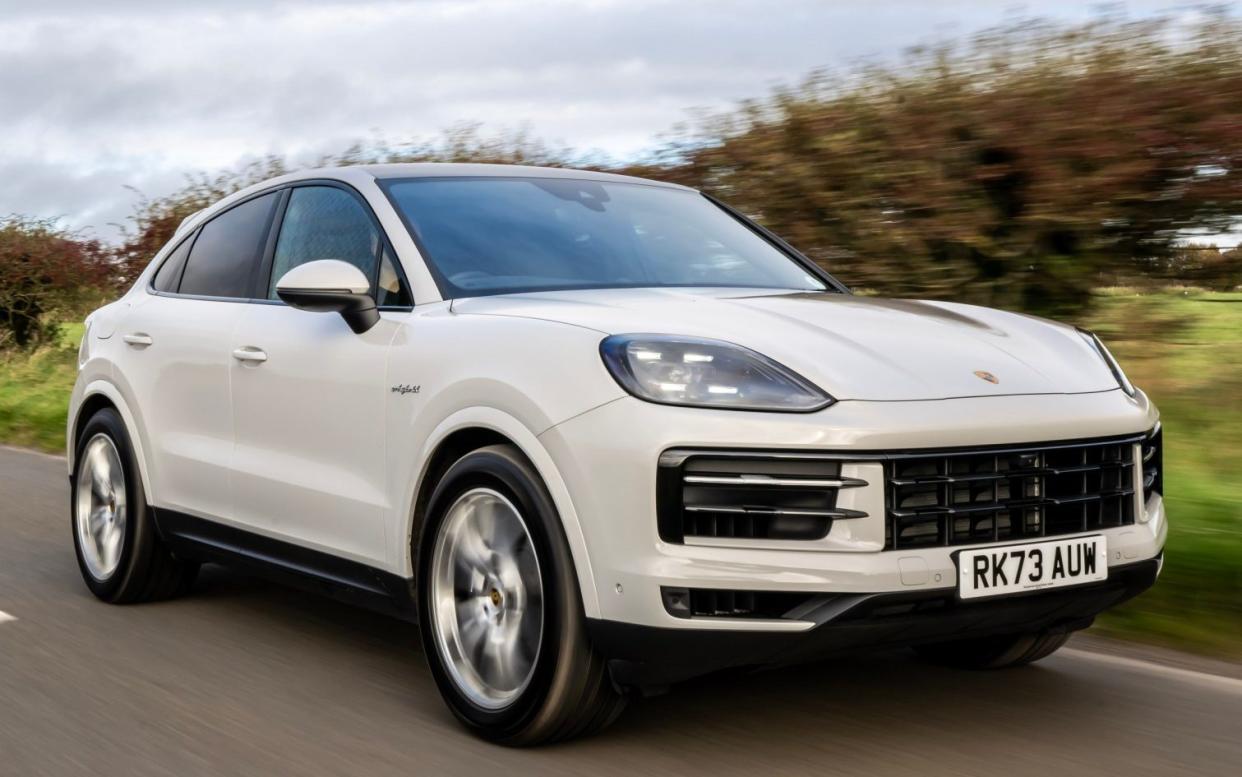
It was a prescient text message to receive. “Why are there so many pillocks in Cayennes around these days?” came the curt missive from a friend.
It is no exaggeration to say that the Porsche Cayenne has been a runaway success for its maker. But for every Cayenne fan, every driver who’ll gladly pick one over the equivalent Range Rover Sport or BMW X5, you’ll find plenty more like my friend, who tut and roll their eyes at the sight of yet another “gauche” SUV taking up space on urban streets – especially one with a Porsche badge on it.
My friend didn’t know, as it happened, that the following week, I was due to take delivery of a Cayenne. Duly, when it turned up, I sent him a photo back, with a caption offering to come round and block him in.
Thing is, you can hate on these cars as much as you like, but there’s a reason they’re as sought-after as they are. The Porsche Cayenne might be big and in-your-face, but it’s also very good at what it does – namely, being an extremely luxurious, extremely powerful go-anywhere, do-anything SUV that still feels much sportier than any other SUV to drive.
And now, to keep it at the top of its game, Porsche has brought out a raft of improvements. So, should you still want/not want one (delete as appropriate)?
Pros
Satisfying to drive
Smart, slick interior
Lots of passenger space
Cons
Stingy equipment list
Brakes aren’t ideal
Small boot
Nip and tuck
Tweaks to the Cayenne can be summarised thus: there’s a revised interior with a new curved virtual instrument binnacle. Porsche has also moved the gear selector to the dash, freeing up space for a fancy new climate control panel and more storage space.
There’s also a new 10.9-inch counterpart as an optional extra, which sits above the glovebox and allows the passenger to stream video, view driving data, or control the infotainment without the need to stretch that tedious extra couple of inches to reach the central, 12.3-inch touchscreen.
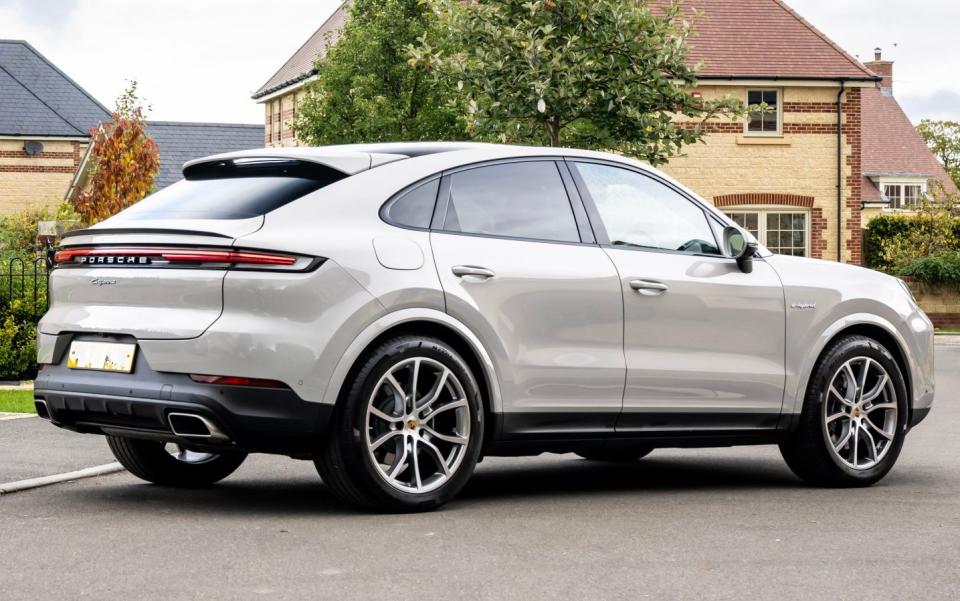
There are new engines, too. The V6 in the S model is replaced by a thumping great V8 – stay tuned for a drive in that coming soon.
Today, though, we’re in the doyen of company car drivers, the Cayenne e-Hybrid, whose plug-in hybrid powertrain benefits from a new, bigger battery, and an increased electric range, which makes it even friendlier in benefit-in-kind (BIK) terms than before.
This one’s a Coupe, which in layman’s terms means it gets a more shallow rake to its tail and slightly less boot space, though all of these new engines and upgrades can also be had in the “proper” SUV version of the Cayenne.
There’s also a boost to the spec, with adaptive LED headlights, adaptive suspension and 20-inch wheels now coming as standard on every Cayenne.
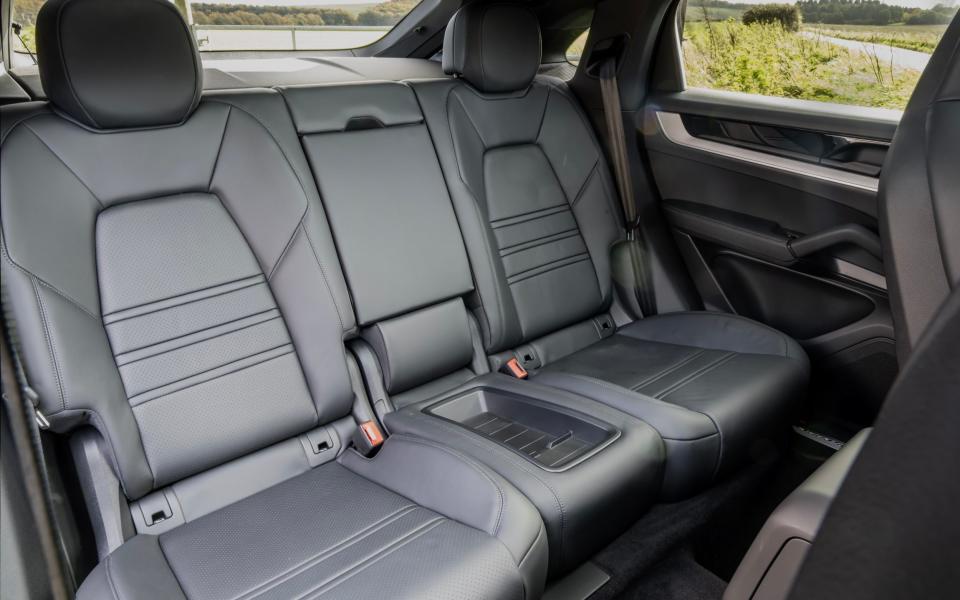
Having said that, and as tends to be the way with Porsche, certain things you might expect to come with a car of this price are notable by their absence; for example, the steering wheel adjusts manually, there’s no lumbar support for the seats, and if you want heated seats, a heated screen, full leather upholstery (in place of the partial leather that comes as standard), metallic paint or ambient lighting, you’ll have to pay extra – on top of the £82,000-odd this version will set you back.
Company policy
Of course, that’s not how most of its end users will be paying for it. Instead, they’ll pay tax on the eight per cent BIK rate that this model incurs, which means it’ll hit your tax bill to roughly the same degree as a BMW X5 xDrive50e M Sport or a Lexus RX450h Takumi. A Range Rover Sport P460e Dynamic SE, however, will hurt your wallet less, as its huge battery and ability to travel further on electric power alone mean it sits in the five per cent tax band.
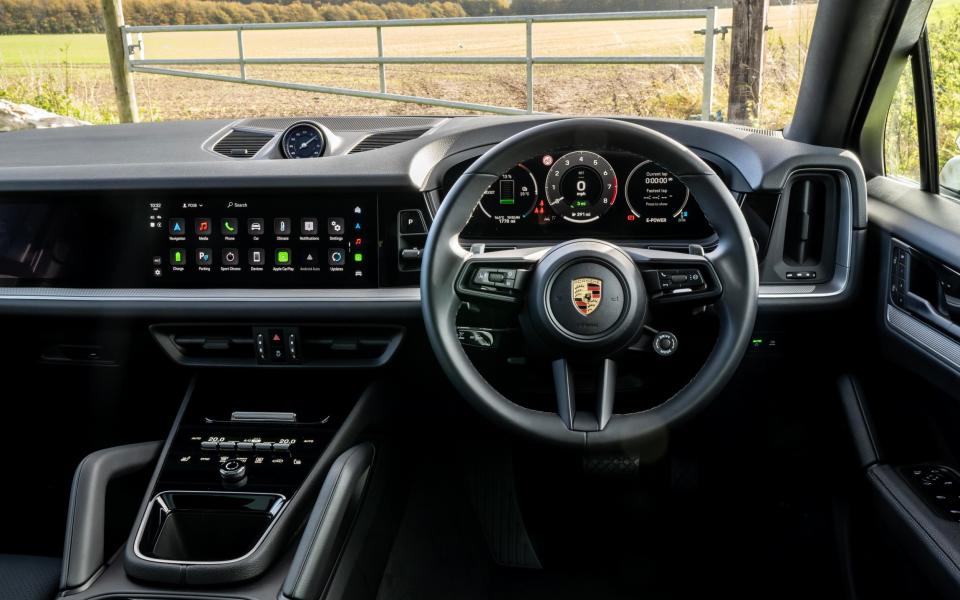
But don’t forget that you might want to add some options to your Cayenne to bring it up to a similar specification to those rivals – and that’ll push up the P11D value, which will increase your tax bill.
Mind you, one could argue that you do, in fact, get what you pay for with the Cayenne. From the moment you step inside, it feels special. Not quite in the same way as a Range Rover Sport though; the Porsche is more a top-end business hotel to the Range Rover’s boutique safari lodge.
But the quality is exemplary, with beautiful materials throughout and smart, crisp styling. The new climate control panel is partially touch-sensitive, but you do get proper physical controls to adjust the temperature, which means you can do so by feel alone.
The touchscreen itself is quick, crisp and well thought out, and the virtual dials ahead of the driver are easy to read and well laid out no matter which of the five configurations you choose.
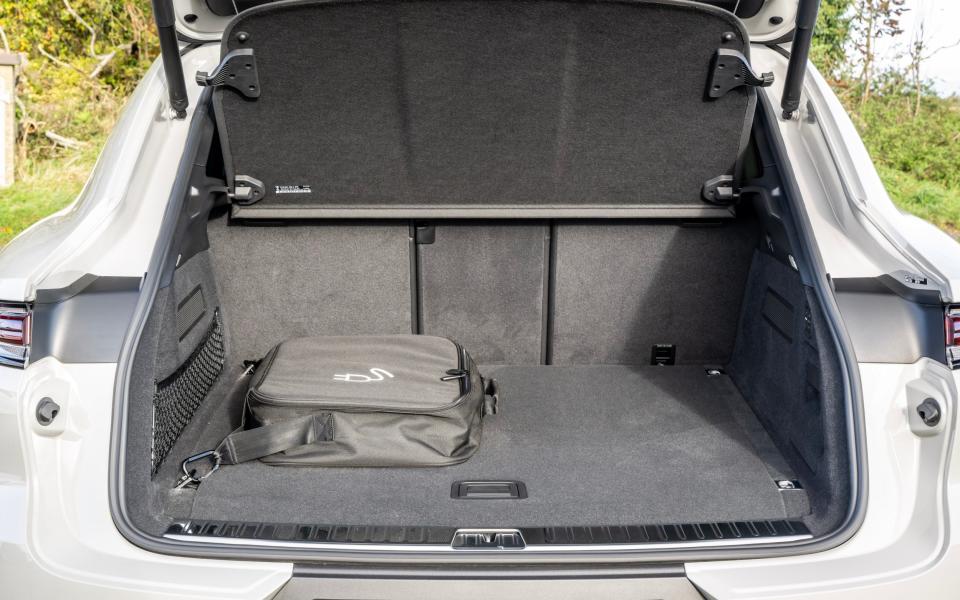
The 434-litre boot is pretty stingy – in fact, every one of the Cayenne’s hybrid rivals will give you more – but passenger space is decent enough whether you’re in the front or rear seats. And the door apertures aren’t quite as tall as on some big SUVs, so loading a child into a car seat might not be quite as easy as you’d imagine.
High on integrity
Plug-in hybrid versions are rarely the best models to drive within their respective ranges and the Cayenne is no exception. However, this is a much better-sorted and more well-rounded effort than most, with very good integration of both electric and petrol components and a slick gearbox that does its job well.
Yes, there’s still the usual delay if you call for more power while electric, as the petrol engine fires up to put its shoulder to the wheel. And, yes, the Cayenne in this form feels heavier and more leaden than the standard car. But not by much.
It helped that our test example was fitted with the optional air suspension; despite the 21-inch wheels, the ride quality wasn’t uncomfortable even if it’s still a touch on the firm side.
The e-Hybrid’s brakes are good and responsive, but there is a bit of sponginess at the top of the pedal, which sometimes results in you slowing less aggressively than you’d hoped; this is usually followed by a panicked harder press that brings you to an abrupt halt. It takes a bit of getting used to.
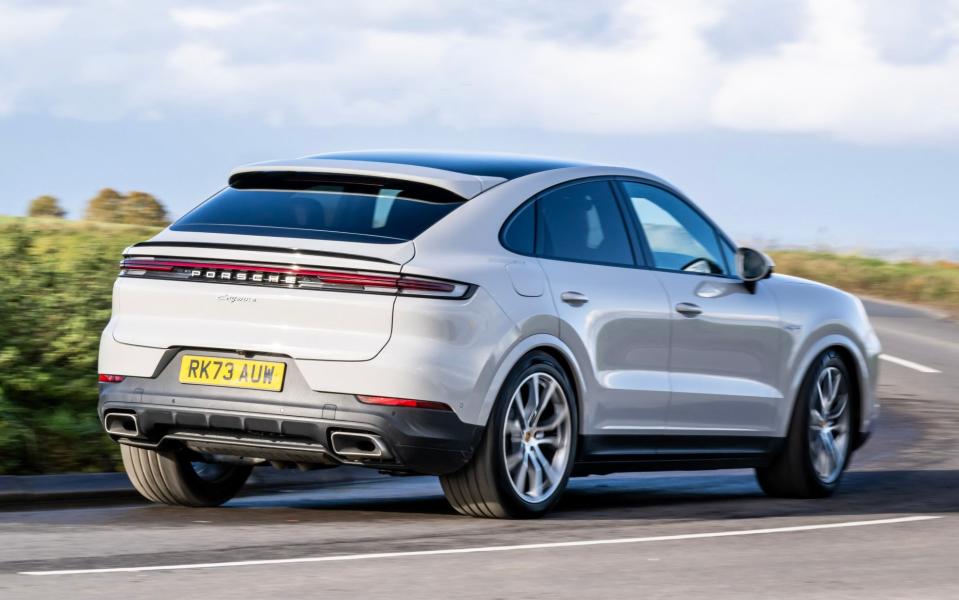
The way the Cayenne controls all that weight is pretty remarkable. Not miraculous; you can still feel it trying to push on ahead in bends, and even with the suspension in its most aggressive mode, there’s noticeable body lean in faster direction changes.
Nevertheless, this is a two-and-a-half ton vehicle; with that in mind, the fact you can hustle it along quite as rapidly as you can is impressive. It’s the least Porsche-y feeling Cayenne of all, but it still feels like a Porsche, and therefore more compelling on a back road than the majority of its rivals.
The Telegraph verdict
If you’re buying it yourself, this is definitely not the best Cayenne on the market. Look to one of the pure petrol models for that. But if it’s a company car you’re picking, the e-Hybrid is the one to have.
Yes, it’s compromised, but the compromises don’t detract too much from the Cayenne’s all-round abilities. And given those abilities set a high bar in the first place, this is still a rather lovely car to drive and to be in.
When you factor in the potential cost savings to a company car driver versus the petrol model, it becomes something of a no-brainer. And if you are wondering why you see so many of them on the road these days, well, that’s probably the reason.
The facts
On test: Porsche Cayenne Coupe e-Hybrid
Body style: Five-door SUV coupe (also available as a five-door SUV)
On sale: now
How much? £81,965 on the road (coupe range from £75,575)
How fast? 158mph, 0-62mph in 4.9sec
How economical? 188.3mpg (WLTP Combined)
Engine & gearbox: 2,995cc six-cylinder petrol engine, 8-speed automatic gearbox, four-wheel drive
Electric powertrain: AC permanent magnet synchronous motor with 25.9kWh battery, 11kW on-board charger, Type 2 charging socket
Electric range: 46 miles (WLTP EAER)
Maximum power/torque: 464bhp/479lb ft
CO2 emissions: 33g/km (WLTP)
VED: £0 first year, £570 next five years, then £170
Warranty: 3 years/unlimited miles
Spare wheel as standard: No (not available)
The rivals
BMW X5 xDrive50e
482bhp, 314mpg, £80,835 on the road
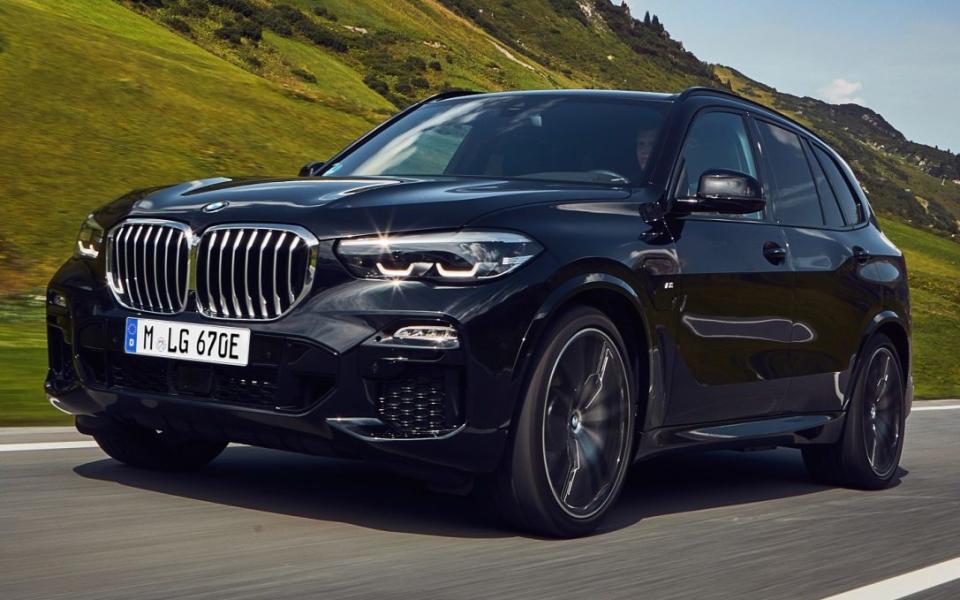
The X5’s whopping great battery enables it to go much further on electric-only power than the Cayenne, or in hybrid mode, it means you’ll get better fuel efficiency for longer from a full charge. Its taller, more traditional stance means the X5 is more practical too, with a bigger boot, but it isn’t as sporty to drive, and nor does it feel quite as swish from inside.
Range Rover Sport P460e Dynamic SE
454bhp, 392.6mpg, £92,980 on the road
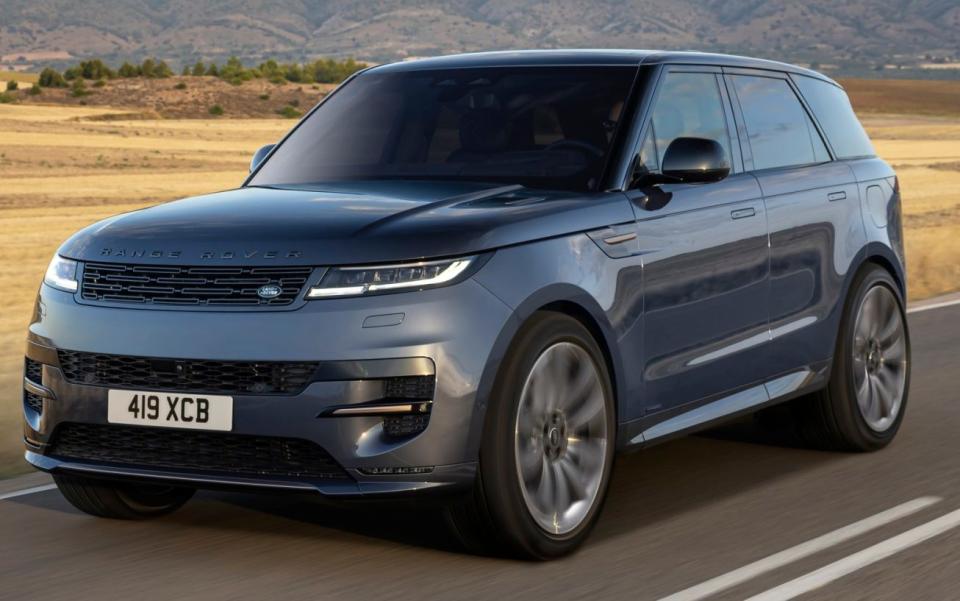
Another huge battery in this Range Rover helps justify the high price; indeed, despite the whopping P11D value, this will be cheaper on company car tax than the Porsche thanks to its lower BIK banding. It’s also a larger car, with an extra row of seats in the back, and feels just as posh inside. It isn’t as sporty, though, and all that weight means the ride can occasionally get crashy.
Lexus RX450h+ Takumi
182bhp, 256.8mpg, £81,600 on the road
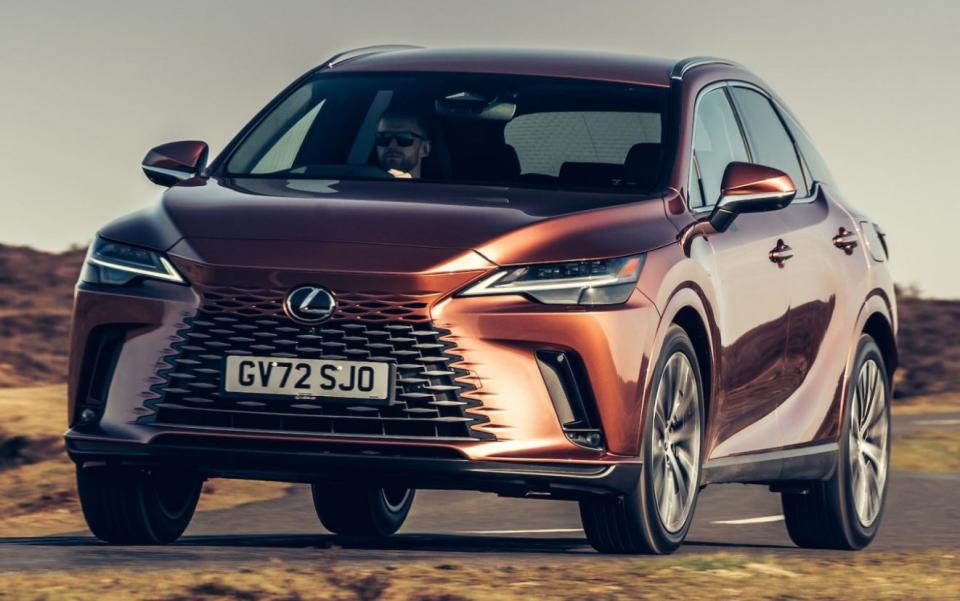
The RX looks significantly outgunned in this company, and so it feels in the flesh, too, but don’t forget this top-of-the-range Takumi model comes bristling with all the toys Porsche won’t throw in. It doesn’t feel as swanky inside, and of course the Lexus badge won’t impress anywhere near as many people at the golf club – but if you’re after reliability, well, there’s none better.

